The Top 20 Foods High In Vitamin K2 (Menaquinone)
Vitamin K2, otherwise known as menaquinone, is an essential vitamin that has some important benefits for our health.
Firstly, we can find vitamin K2 in animal foods (menaquinone-4) and certain plant foods (usually menaquinone-7) that have undergone a fermentation process.
Unfortunately, quantifying the amount of vitamin K2 in a specific food is incredibly difficult. The reason for this is that the amount of vitamin K2 in food heavily depends on the diet of the animal (for animal foods).
With plant foods, the type and amount of bacterial strains used for fermentation influence the available vitamin K2 content.
In this article, we present 20 of the top foods high in vitamin K2. The data source for all nutrition data is the USDA Food Composition Databases.
Note: there is no specific daily value (recommended intake) for vitamin K2 alone, but the recommended intake for total vitamin K is 120 mcg.
1) Natto

| Food | Vitamin K2 per 100 g | Type of Menaquinone |
|---|---|---|
| Natto | 1000 mcg (833 % DV) | MK-7 |
Natto is a popular and traditional Japanese food made by fermenting soybeans with a bacteria called Bacillus subtilis for around 24 hours.
Once fermented, the natto is left to age for around one week before serving.
Notably, natto is the most significant dietary source of vitamin K2, and it contains 1000 mcg per 100 grams (1).
However, not everyone is a fan. The taste (and slimy texture) of this fermented food is an acquired taste; people seem to either love it or hate it.
In addition to its vitamin K2 content, natto is also a good source of various minerals including copper, iron, magnesium, and manganese (2).
2) Jarlsberg Cheese
| Food | Vitamin K2 per 100 g | Type of Menaquinone |
|---|---|---|
| Jarlsberg cheese | 73 mcg (61 % DV) | MK-4 – MK-9 |
The amount of vitamin K2 in fermented dairy products can differ tremendously.
In this particular study, the Norwegian cheese Jarlsberg was one of the best vitamin K2 sources with 73 mcg of vitamin K2 per 100 grams (3).
There are all kinds of different factors which can affect the vitamin K2 content in cheese, and these can include;
- Whether the cows were raised on pasture (grass-fed)
- Soil composition/bacteria content in the soil
- Fat content
- The strain of bacterial starter culture
- Length of fermentation
3) Black Bean Natto
| Food | Vitamin K2 per 100 g | Type of Menaquinone |
|---|---|---|
| Black bean natto | 796 mcg (663 % DV) | MK-7 |
Although people tend to associate natto with soybeans, they are not the only food used to produce natto.
In Japan, it is also common to use black beans for making the fermented side dish.
While black bean natto is not quite as high in vitamin K2 as soybean natto, it is not far behind with 796 mcg of the vitamin per 100 grams (4).
4) Goose Liver

| Food | Vitamin K2 per 100 g | Type of Menaquinone |
|---|---|---|
| Goose liver | 369 mcg (308 % DV) | MK-4 |
Generally speaking, organ meats are extremely nutrient-dense, and they provide more in the way of nutrition than regular “muscle” meat.
In this case, it is also true for vitamin K2, and goose liver is one of the best animal sources of this vital nutrient.
Per 100 grams, research has demonstrated goose liver to contain 369 mcg of the vitamin (5).
Particularly popular in France, goose liver can be harder to find in some areas. However, a quick Internet search should show local places where it is available for purchase.
5) Cheonggukjang
| Food | Vitamin K2 per 100 g | Type of Menaquinone |
|---|---|---|
| Cheonggukjang | 112-461 mcg (93-384 % DV) | MK-7 |
Here is another lesser-known food in the Western world.
Cheonggukjang is a type of fermented bean curd stew native to South Korea, and it shares some similarities to natto.
Similar to other sources of vitamin K2, research shows that the menaquinone content can vary between different tests on the food.
However, these studies show that cheonggukjang has menaquinone content ranging from 112 mcg to 461 mcg per 100 grams (6).
If you want to pick this food up, it should be easy to find in a local Korean or Asian market.
6) Chicken Liver
| Food | Vitamin K2 per 100 g | Type of Menaquinone |
|---|---|---|
| Chicken liver | 14.1 mcg (12 % DV) | MK-4 |
Chicken liver is another organ meat rich in menaquinone-4, and it provides 14.1 mcg per 100 grams (7).
In addition to their provision of vitamin K2, chicken livers are a rich source of almost every essential vitamin and mineral, including more than 100% of the RDI for vitamins A, B2, B12, and folate (8).
For anyone unsure about how to cook this food, there is a healthy recipe here for garlic chicken livers.
7) Gouda Cheese

| Food | Vitamin K2 per 100 g | Type of Menaquinone |
|---|---|---|
| Gouda cheese | 73 mcg (61 % DV) | MK-4 – MK-9 |
Hard varieties of cheese like Gouda are an excellent source of vitamin K2, and they contain various types of menaquinone, ranging from MK-4 to MK-9.
On a 100-gram basis, this Dutch cheese provides 73 mcg of vitamin K2 (9).
In addition to this, the cheese is an excellent source of protein and several other nutrients such as calcium, phosphorus, vitamin B12, and zinc (10).
Another great thing about Gouda is that it tastes delicious.
8) Eggs
| Food | Vitamin K2 per 100 g | Type of Menaquinone |
|---|---|---|
| Egg (large) | 8 mcg (6 % DV) | MK-4 |
Eggs provide eight micrograms of menaquinone-4 per 100 grams, which is approximately four micrograms per egg (1).
Although this may not sound a lot, just one egg is a small serving size.
Given that many people consume three or four eggs in an omelet or scramble, eggs can provide a decent amount of the vitamin.
As mentioned earlier, this K2 content will differ from egg to egg, and it will not be a universal set amount.
For most menaquinone, choose fresh eggs from pasture-raised chickens.
Lastly, it is worth noting that the vitamin K2 content is within the egg yolk. For those who only eat the egg whites, you’ll miss out on this as well as many other essential nutrients.
In other words; eating only the egg whites means missing out on menaquinone (as well as many other essential nutrients).
9) Goose Leg
| Food | Vitamin K2 per 100 g | Type of Menaquinone |
|---|---|---|
| Goose leg | 26 mcg (22 % DV) | MK-4 |
Goose makes its second appearance with goose leg, and this food provides 31 mcg of vitamin K2 per 100 grams (5).
In addition to the vitamin K2 content, this fatty cut of meat provides an abundance of protein and the mineral selenium.
10) Pepperoni

| Food | Vitamin K2 per 100 g | Type of Menaquinone |
|---|---|---|
| Pepperoni | 41.7 mcg mcg (35 % DV) | MK-4 |
Next on the list is pepperoni, which may be a surprise to some people.
Since vitamin K2 is fat-soluble, fatty cuts of meat tend to be among the best providers of the nutrient.
For this reason, pepperoni’s high fat content is likely why it is one of the best sources, and it provides 41.7 mcg per 100 grams (11).
Pepperoni is a tasty cured meat that usually combines beef, pork, salt, and various spices.
11) Sour Cream
| Food | Vitamin K2 per 100 g | Type of Menaquinone |
|---|---|---|
| Sour cream | 6 mcg (5 % DV) | MK-4 |
Sour cream is a delicious dairy condiment that plays a role in numerous cuisines across Europe and North America—especially in Mexico.
This fermented dairy product also contains a good source of vitamin K2, with 100 grams providing around six micrograms (12).
As well as containing menaquinone, sour cream provides a good amount of calcium, vitamin A, and a small amount of protein (13).
With its creamy texture and high fat content, sour cream works well in curries, soups and strews. It also makes a good combination with desserts or as a topping for meat-based dishes.
12) Cream Cheese
| Food | Vitamin K2 per 100 g | Type of Menaquinone |
|---|---|---|
| Cream cheese | 8.7 mcg (7 % DV) | MK-4 |
While cream cheese may not be equal to hard cheese nutritionally, it still offers a fair amount of nutrients and tastes delicious.
Among these nutrients, cream cheese is high in vitamin K2 and provides 8.7 mcg of MK-4 per 100 grams (14).
One thing to be aware of here is to make sure you buy regular cream cheese. Since vitamin K2 is fat-soluble, low-fat cream cheese will contain lower amounts of the vitamin.
Cream cheese tastes delicious as a topping on food, and in recent years it has been a popular rice substitute for making low-carb sushi rolls.
13) Salami

| Food | Vitamin K2 per 100 g | Type of Menaquinone |
|---|---|---|
| Salami | 28.0 mcg (23 % DV) | MK-4 |
According to the USDA’s Food Composite database, cooked salami provides 28 mcg of vitamin K2 per 100 grams (11).
Salami is a fermented and air-dried cured sausage made with beef and pork.
Since salami shares much of the same nutritional profile as meat, it is a source of the menaquinone-4 type of the vitamin.
Salami also provides a high amount of protein, selenium, zinc, and B vitamins (15).
14) Butter
| Food | Vitamin K2 per 100 g | Type of Menaquinone |
|---|---|---|
| Butter | 20.9 mcg (17 % DV) | MK-4 |
Butter may not be the most nutrient-dense of foods, but it does provide several fat-soluble vitamins such as vitamin A, D, and K2.
The USDA Food Database shows that butter contains 20.9 mcg per 100 grams (11).
Since butter is a concentrated dairy fat, opting for a product sourced from grass-fed cows will offer the most vitamin K2.
15) Pork Sausage
| Food | Vitamin K2 per 100 g | Type of Menaquinone |
|---|---|---|
| Pork Sausage | 22.5 mcg (19 % DV) | MK-4 |
Fatty cuts of meat are one of the best sources for vitamin K2, and pork sausages are no exception.
Per 100 grams, pork sausages offer around 22.5 mcg of menaquinone-4 (11).
Bear in mind that sausages with a high pork meat/fat content are preferable; cheaper processed sausages with numerous additives won’t offer the same benefits.
For a traditional cooked breakfast, combining some sausages with a cheese omelet could really increase the menaquinone content.
16) Chicken Wings (Including skin)

| Food | Vitamin K2 per 100 g | Type of Menaquinone |
|---|---|---|
| Chicken wings | 25.3 mcg (21 % DV) | MK-4 |
Chicken is a good source of vitamin K2, and darker meat offers more fat and a higher concentration of the vitamin.
Among the various cuts of chicken, wings are one of the best.
One hundred grams of chicken wings, including skin, provides around 25.3 mcg of menaquinone-4 (11).
Chicken skin also offers a rare concentrated source of dietary glycine, which may offer numerous health benefits (16).
17) Chicken Thigh
| Food | Vitamin K2 per 100 g | Type of Menaquinone |
|---|---|---|
| Chicken thigh | 24 mcg (20 % DV) | MK-4 |
Chicken thigh is another source of dark, fatty meat rich in vitamin K2. Per 100 grams, chicken thigh provides 24 mcg of the nutrient (11).
If you need some ideas about what to do with chicken thighs, there is a delicious recipe here for crispy baked chicken thighs.
18) Heavy Cream
| Food | Vitamin K2 per 100 g | Type of Menaquinone |
|---|---|---|
| Heavy cream | 8 mcg (7 % DV) | MK-4 |
Heavy cream has a habit of upgrading the taste of almost anything.
Add it to a hot chocolate or coffee for a smooth, enjoyable drink, or add it to a curry for a mild and creamy taste.
Since heavy cream is a highly concentrated source of butterfat, it also supplies a decent amount of vitamin K2.
Per 100 grams, heavy cream offers 8 mcg of the nutrient. (17).
In addition to its vitamin K2 content, heavy cream is also a good source of vitamins A, D, and the mineral calcium (18).
19) Kielbasa

| Food | Vitamin K2 per 100 g | Type of Menaquinone |
|---|---|---|
| Kielbasa | 20.1 mcg (17 % DV) | MK-4 |
Kielbasa is another type of sausage product, and this one comes from Poland.
However, this Polish sausage is quite a lot different to typical sausages, and it is loaded with garlic and other herbs, giving it a spicy flavor.
The meat content comes from pork, pork fat, and beef, and it provides around 20 mcg of vitamin K2 per 100 grams (11).
20) Chicken Drumstick
| Food | Vitamin K2 per 100 g | Type of Menaquinone |
|---|---|---|
| Chicken drumstick | 35.7 mcg (30 % DV) | MK-4 |
Similar to chicken wings and thighs, the chicken drumstick is another dark meat cut of chicken that is high in vitamin K2.
Per 100 grams, chicken drumsticks have been shown to contain 35.7 mcg of menaquinone-4 (11).
Since the average chicken drumstick weighs well over 100 grams, the menaquinone content from chicken drumsticks can easily add up.
Considerations
Now that we have gone through some of the top foods for vitamin K2, there are a few extra things to consider.
Vitamin K2 Recommended Intake
Once again, for clarity, there is no established reference daily intake (RDI) specifically for vitamin K2.
In this guide, the daily values given have been based on the published total vitamin K requirements.
On this topic, it is also possible to get vitamin K from a range of plant foods in its vitamin K1 (phylloquinone) form.
Here is a list of foods high in vitamin K1:
30 Foods High In Vitamin K1 (Phylloquinone)
Menaquinone MK-4 vs. MK-7
While there are several types of menaquinone, most of the published research has been on MK-4 and MK-7.
On this note, it is worth clarifying that the mechanisms for MK-4 and MK-7 are different.
While both types of menaquinone are bioavailable, MK-7 contributes to plasma (blood) levels of vitamin K for a more extended period.
For instance, one study demonstrated that consuming 425 mcg of MK-4 led to no detectable presence in the blood.
On the other hand, participants consuming 425 mcg of MK-7 had detectable levels of the vitamin in their blood for 48 hours (19).
MK-4 and MK-7 Function
The longer half-life of MK-7 also makes it better accessible by different parts of the body, such as the skeletal system.
Research shows that MK-7 likely makes the most significant contribution to bone health and preservation of bone mineral density (20, 21).
On the other hand, MK-4 gets quickly taken up by a wide variety of tissues in the body, where it accumulates over time.
These tissues include the arterial wall, where MK-4 may potentially play a role in reducing/preventing arterial calcification (22, 23).
Final Thoughts
Research on vitamin K2 is still in its infancy, and there is a great deal of ongoing research to understand this nutrient better.
However, based on existing studies, a combination of MK-4 and MK-7 may be the best way to get the optimal benefits.
Consuming regular animal food sources of MK-4 alongside occasional natto (or natto-derived supplements) for MK-7 could be a way of doing this.
Overall, there are not a high number of foods that contain vitamin K2, and including some of the foods in this list is an excellent way to improve our intake of the nutrient.
To learn more about different essential vitamins, see this listing of each one.

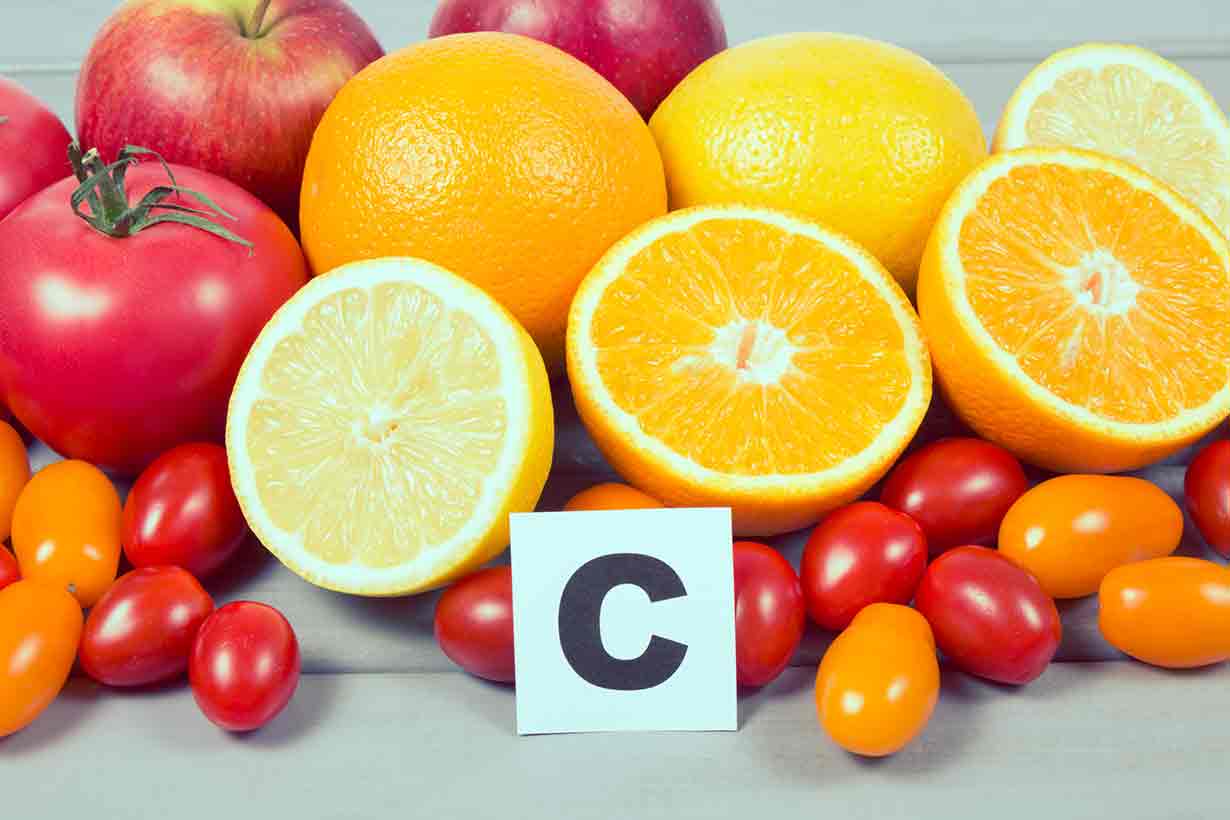

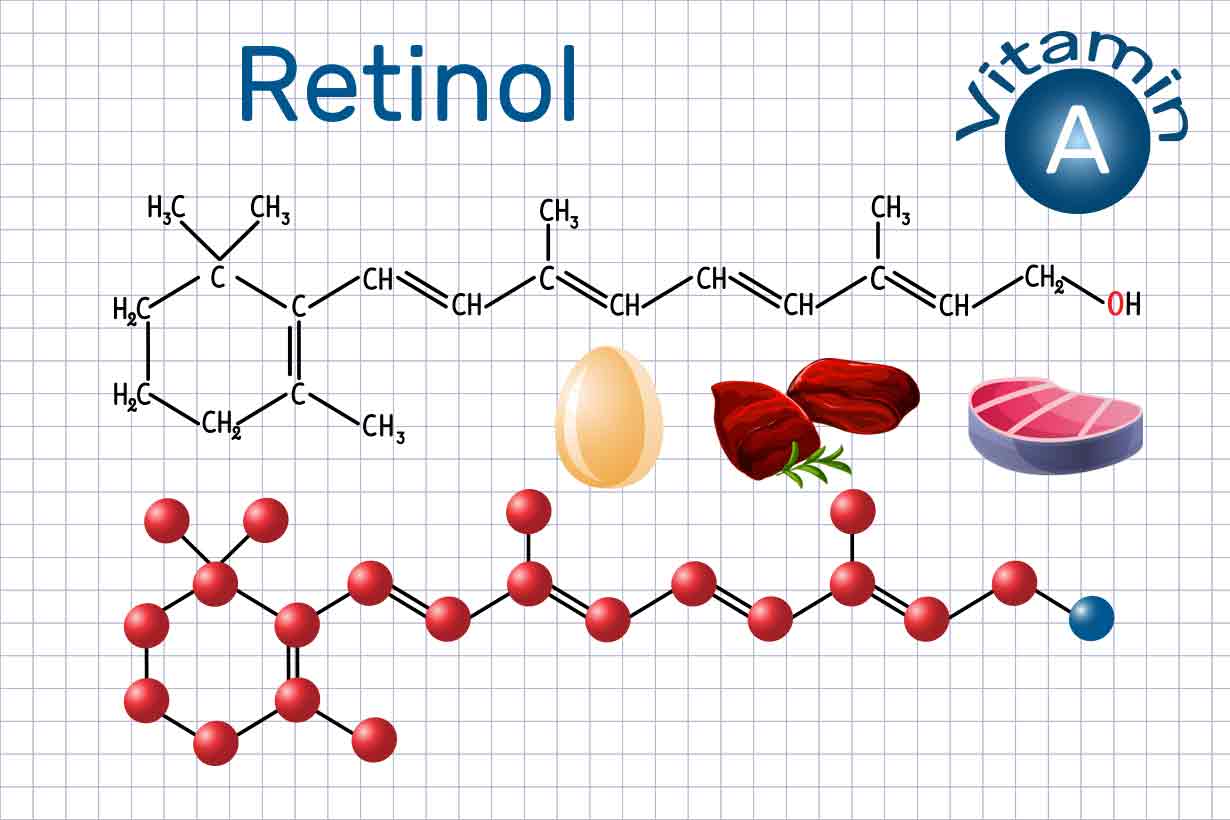
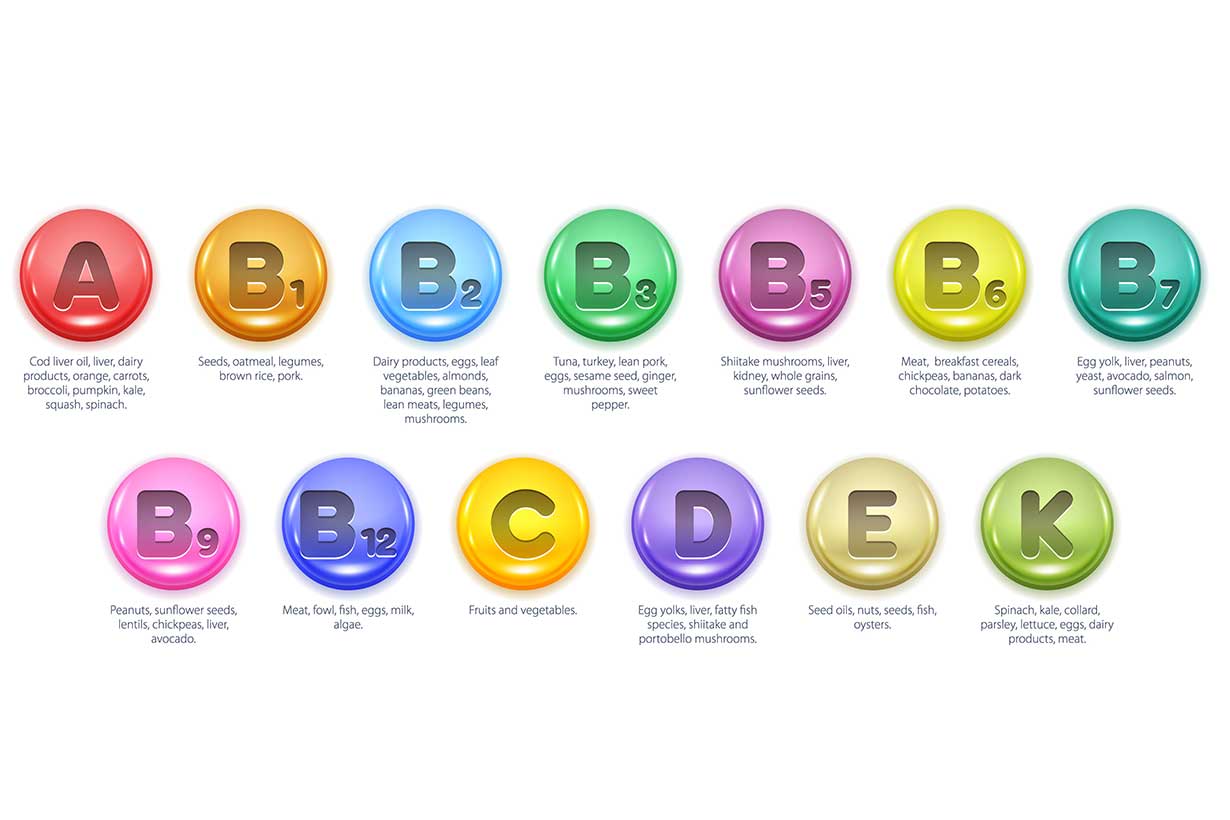
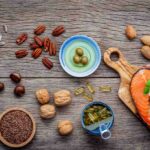

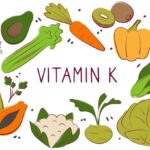
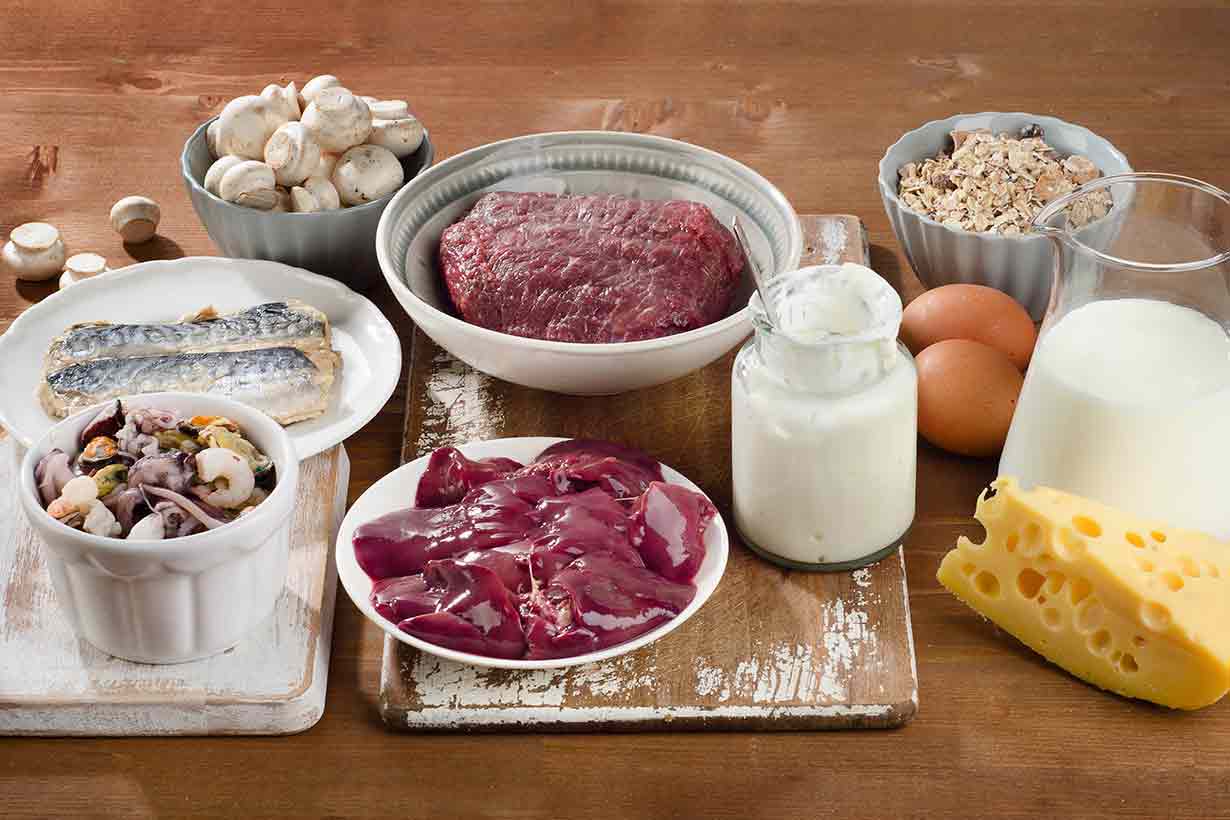
19 thoughts on “The Top 20 Foods High In Vitamin K2 (Menaquinone)”
The “Key Point” needs to be clarified:
Key Point: Initial research suggests that MK-7 may be more important for bone health, while MK-7 could be more beneficial for vascular health.
The second MK-7 should be MK-4??
Thanks for spotting that mistake, Kris.
You are correct and I have changed it now; the latter MK-7 should have read MK-4.
Thanks. Do you have any studies for amounts of mk-7 or mk-4 in salmon roe ?
I haven’t been able to source any figures for salmon roe, unfortunately. It’s a great food choice though!
Please can you tell me the K2 content of skinless chicken thighs. I’ve also read that eggs from grass fed chickens have around 37 mcg per 100g of egg. Is this not correct? Thank you.
According to the USDA database, skinless chicken thighs provide 8.5 mcg of K2 per 100 grams (raw weight).
Do you have a reliable reference for the 37 mcg from grass-fed chicken eggs? I’ve also seen that number mentioned, but I haven’t come across evidence for it in either studies or nutrient databases.
Are you familiar with Weston Price?
Yes, he’s pretty famous. He used to call vitamin K2 “activator X” before it was officially discovered/had a name.
You have conflicting numbers for chicken livers. Is it 14.1 micrograms in chart or 141 mcg /100gm in discussion below chart. Makes a big deal in adding chicken liver to diet decision?
Thanks for pointing that out Marty, and I’m sorry for the confusion. It should be 14.1 mcg in both – now updated.
A great article to get some knowledge out there about this important Vitamin and the difference between K1 and K2. Thank you.
Thanks, Susan. The two types of vitamin K certainly have some big differences.
Excellent article. Everywhere I go I tell people to eat more grass-fed foods for the K2 benefits. I would also recommend a baseline calcium score for everyone so that they know how much calcium has built up in their arteries. Studies are showing that K2 actively removes the harmful calcification in the arteries and puts it back in the bones. That’s incredible! But my question is: How much of that calcium do we want to be removed if it’s currently stabilizing the plaque?
Thank you. The studies certainly hint that vitamin K2 has important health effects. Hopefully, future studies should be able to give us a better understanding of its full importance. I’m not sure on the plaque stabilization, to be honest – a doctor or ideally cardiologist would be better able to comment on that. Though according to research, plaque regression is viewed as more beneficial than stabilization (ref: https://www.ncbi.nlm.nih.gov/pmc/articles/PMC3872716/)
The reason for not finding the MK-4 in serum, as was the case in one study cited, is because some of all forms of K consumed are not taken up in serum.
Instead, some K is cleaved in the small intestine to become menadione, vitamin K3, which is ultimately packaged in chylomicrons to be transported via the lymph system to distant tissues where the enzyme, UBIAD1, converts the K3 into MK-4, the only form of K2 not made by fermentation.
This enzyme controls calcium and cholesterol as well as being essential to create MK-4.
This complex process has myriad implications to health and needs much more investigation.
We impair it in many ways.
Is K2 found in the meat of those cuts, or particularly in the fat?
The article was full on valuable information for me. Something that I found annoying about the first google search on K2, it’s how the first link does not recommend pork meats, sausages, even beef liver, and I’m starting to think that it’s due to it’s high saturated fat content? Altough butter is indeed mentioned. Weird.
Glad it was useful Martin. You will find very little K2 in muscle meat, and most of it is located in the fat (hence why long-chain menaquinones are found in fattier cuts of meat, butter, cheese, and so on). I’m unsure about your first Google search you came across, but some sites do tend to cover foods that fit their preferred diet.
Very interesting article on foods that have vitamin k2. Do you think taking k2 supplements is a good idea for someone who don’t eat meat?
Hi Shalu,
If you don’t eat meat then you can get (arguably better) vitamin K2 from foods like natto and cheonggukjang, if you have access to them. Supplements based on natto bacteria seem to be a good option too.
Comments are closed.